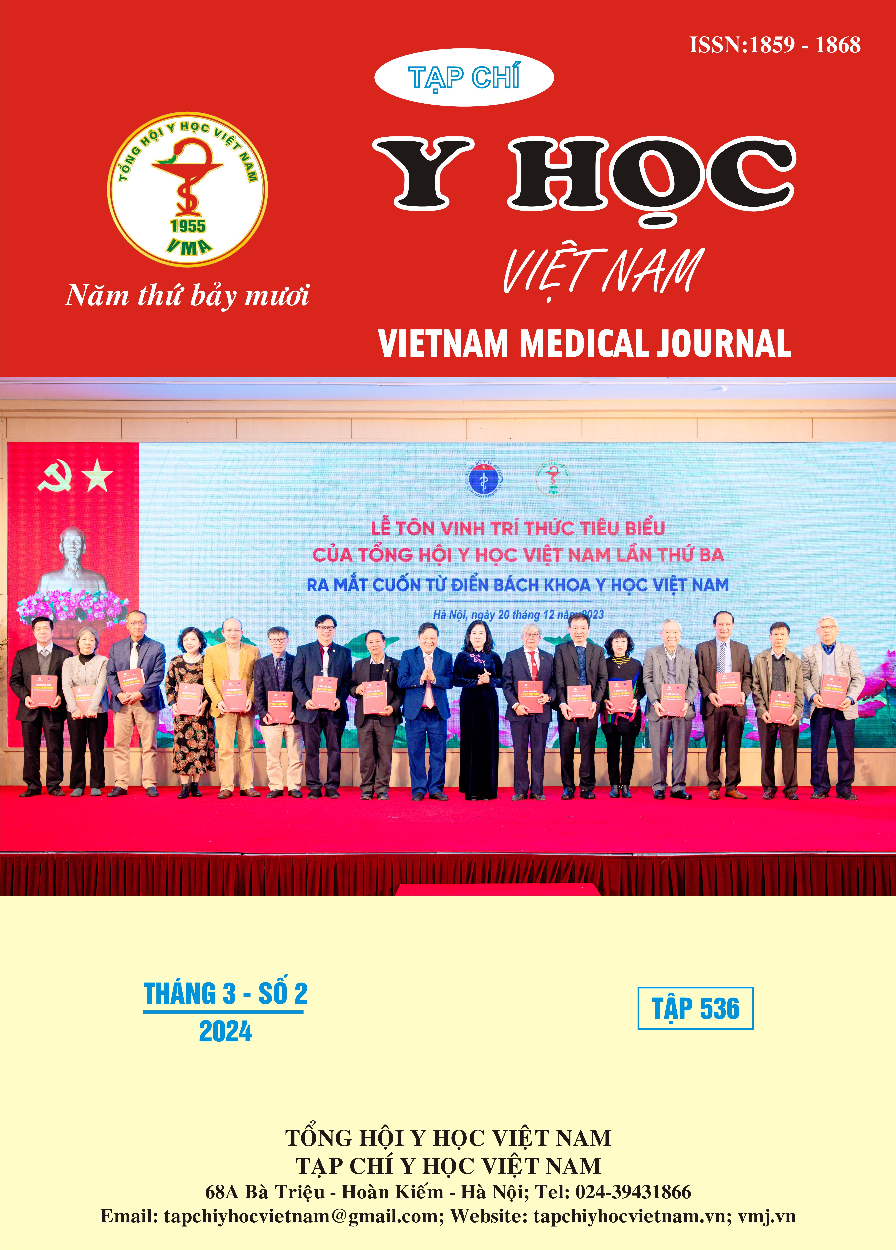THE VALUE OF VENTRICULOATRIAL CONDUCTION PATTERNS IN RESPONSE TO ADENOSINE IN DIFFERENTIAL DIAGNOSIS OF ATRIOVENTRICULAR NODAL REENTRANT TACHYCARDIA AND ORTHODROMIC RECIPROCATING TACHYCARDIA
Main Article Content
Abstract
Aims: This study sought to the value of ventriculoatrial (VA) conduction patterns in response to Adenosine in differential diagnosis of atrioventricular nodal reentrant tachycardia (AVNRT) and orthodromic reciprocating tachycardia (ORT). Results: A total of 45 patients between 2022 and 2023, undergoing electrophysiological study is diagnosed as AVNRT or ORT at Cardiovascular center – E hospital, had assessment of VA conduction during ventricular pacing and adenosine administration. Present of block or lengthening of VA conduction had 96% sensitivity and specificity for diagnose AVNRT. One patient with Adenosine-induced VA block and inducible ORT had decremental AP. Adenosine caused VA block in 2 patients with encentric VA activation due to atypical AV nodal conduction. Persistent VA conduction had 94% sensitivity and specificity for diagnose ORT. Concentric VA conduction persisted in 3 patients with septal AP. Adenosine unmasked free-wall APs in 5 patients by blocking AV nodal conduction, shifting VA activation from concentric and fusion to eccentric. Conclusions: The response of VA conduction to Adenosine is a highly sensitive and specificity method for differential diagnosis of AVNRT and ORT. Besides, in cases of VA conduction is contested by AVN, Adenosine-include block VA nodal conduction can delineate the location of AP atrial insertion site.
Article Details
References
2. Martínez-Alday J.D., Almendral J., Arenal A., et al. Identification of concealed posteroseptal Kent pathways by comparison of ventriculoatrial intervals from apical and posterobasal right ventricular sites. Circulation, 1994; 89(3), 1060–1067.
3. Lerman B.B., Markowitz S.M., Cheung J.W., et al. Supraventricular Tachycardia: Mechanistic Insights Deduced From Adenosine. Circ Arrhythm Electrophysiol, 2018; 11(12), e006953.
4. Liu C.F., Ip J.E., Cheung J.W., et al. Utility of Pre-Induction Ventriculoatrial Response to Adenosine in the Diagnosis of Orthodromic Reciprocating Tachycardia. JACC Clin Electrophysiol, 2017; 3(3), 266–275.
5. Engelstein E.D., Stein K.M., Markowitz S.M., et al. Posterior fast atrioventricular node pathways: implications for radiofrequency catheter ablation of atrioventricular node reentrant tachycardia. J Am Coll Cardiol, 1996; 27(5), 1098–1105.
6. Ip J.E., Dobesh D.P., Liu C.F., et al. Repetitive oscillating atrial activation during supraventricular tachycardia. J Cardiovasc Electrophysiol, 2014; 25(10), 1137–1139.
7. Chen S.A., Tai C.T., Chiang C.E., et al. Electrophysiologic characteristics, electropharmacologic responses and radiofrequency ablation in patients with decremental accessory pathway. J Am Coll Cardiol, 1996; 28(3), 732–737.
8. Efimova E., Riahi S., Fiedler L., et al. Adenosine sensitivity of retrograde fast pathway conduction in patients with slow-fast atrioventricular nodal reentrant tachycardia: a prospective study. Heart Rhythm, 2014; 11(5), 871–876.


